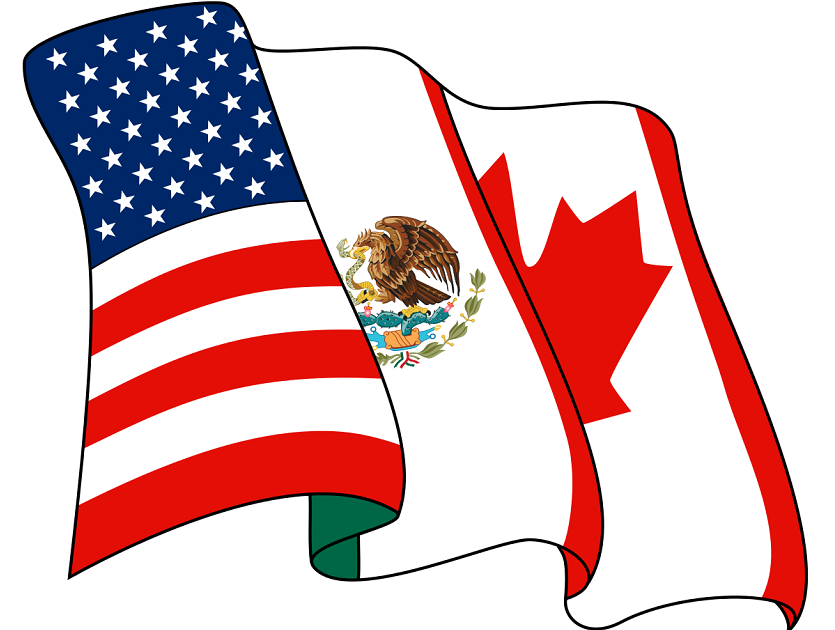The biotech portion of the U.S.-Mexico-Canada Agreement is just one example of several new ag provisions that were added during the overhaul of the North American Free Trade Agreement – NAFTA 2.0 as some are calling it - over the past year of negotiations. Dairy farmers, poultry producers, wine makers and others got big concessions, but the U.S. ag sector was primarily relieved that the massive three-country trade pact that oversees $1.2 trillion in commerce annually survived intact after President Donald Trump threatened repeatedly to pull the U.S. out.
At its core, the new NAFTA is essentially the old NAFTA, preserving virtually tariff-free agricultural trade, and farmers and ranchers across the country are thankful it’s still intact.
But beyond biotechnology, here are some hard-fought changes for the U.S. ag sector:
- U.S. wine bottlers to get a fair share of retail space.
Only the most diligent of shoppers will be able to find a nice bottle of California pinot or Oregon cabernet at a grocery store in the Canadian province of British Colombia. That’s because U.S. wine can’t be sold on regular grocery store shelves along with Canadian wine. The province requires grocery stores to display the U.S. product in a separate “store within a store” that is physically separated from the main retail outlet and has separate cash registers.
But Canada is putting the kibosh on that clearly preferential treatment for Canadian vino as of Nov. 1, 2019, according to a NAFTA side letter included in the pact.
“Specifically, BC shall eliminate the measures which allow only BC wine to be sold on regular grocery store shelves while imported wine may be sold in grocery stores only through a so-called ‘store within a store,’ and such contested measures shall not be replicated,” the agreement reads.
- U.S. and Mexico agree to use of some cheese names.
Mexico, in another side letter, agreed to preserve the ability of U.S. cheese makers to sell swiss, mozzarella, edam, havarti, gouda and a long list of other cheeses. The EU, which is also cementing a trade pact with Mexico, is demanding the names of many cheeses and foods be walled off from use by anyone other than certain European producers. Mexico has already agreed to many of these EU demands for “geographic indications,” but U.S. negotiators managed to get an exemption for some.
Asiago is one name that U.S. negotiators could not get on the list, and U.S. businesses like the Sartori Company are scrambling to come up with something they can call the asiago cheese they sell to Mexico.
- Canada agrees to tear down dairy pricing mechanism.
This was one of the most contentious issues in negotiations with Canada, but in the end U.S. dairy farmers rejoiced. Canada agreed to eliminate its Class 7 dairy pricing system – a policy that resulted in Canada flooding the international market with subsidized skim milk powder and hundreds of millions of dollars in lost U.S. exports.
Beyond the pledge to eliminate Class 7 within six months of implementation of the USMCA, Canada also agreed to phased-in increases for U.S. access to its tightly controlled domestic market by setting up new tariff rate quotas for milk, cheese, cream, skim milk powder, butter, ice cream, whey and other dairy products.
- Canada agrees to fair grading for U.S. wheat.
Canada agreed to U.S. demands to change its ways when it comes to grading U.S. wheat. Under current policy, U.S. wheat is automatically given the lowest feed grade possible. That put a huge dampener on cross-border trade because U.S. farmers obviously did not want to sell top-shelf wheat for baking bread and making pasta at the same price as low-quality grain used for feeding livestock.
- Canada to open wider for U.S. poultry.
The U.S. sells about $600 million worth of poultry and eggs to Canada a year, but the U.S. industry has long complained it could be selling a lot more. Canada did not do away with its market protections, but did agree to allow more market access over time through new TRQs. There’s a new 57,000-ton quota for chicken that kicks in six years after implementation as well another allowance for an increase of an extra 10 million dozen eggs that starts in the first year.
- Fruit and vegetable provision left on NAFTA cutting room floor.
For some U.S. producers, it’s what did not make it into USMCA that’s more important than what did. Tomato farmers in Florida and Georgia led the charge to get some protection against rising U.S. imports of fruits and vegetables from Mexico, but in the end Mexican opposition won out.
Interested in more news about the farm bill, trade issues, pesticide regulations and more hot topics?
Sign up here for a four-week Agri-Pulse free trial. No risk and no obligation to pay.
U.S. negotiators failed to get a proposal into the pact to make it easier for the U.S. to sue Mexico for dumping fruits and vegetables. Under current trade rules, farmers can only file anti-dumping suits if they can show damages across the entire country. The U.S. “seasonality” proposal would make an exception for perishable and seasonal crops, allowing complaints on a regional basis.
“Years of harm from unfair trading practices such as dumping and subsidies have caused family farms that have operated for generations to close their doors,” said the Florida Fruit & Vegetable Association (FFVA). “Without relief, Florida’s specialty crop industry will continue to suffer and shrink.”
For more news, go to: www.Agri-Pulse.com


